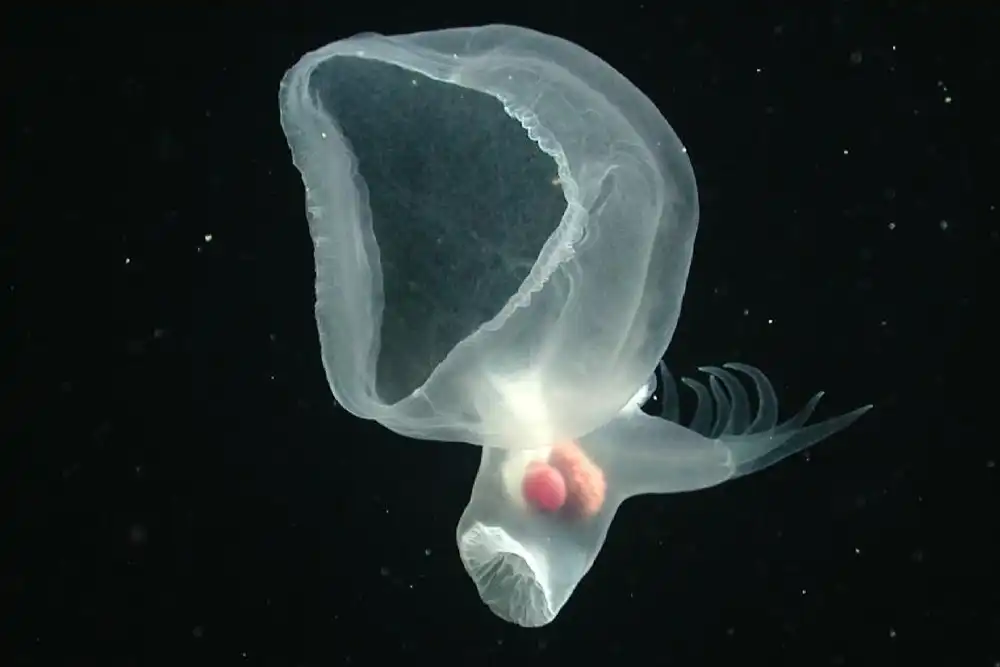
Researchers on the Monterey Bay Aquarium Analysis Institute (MBARI) have found a brand new species of nudibranch – named Bathydevius caudactylus – swimming within the deep waters off the Pacific coast of North America.
Beforehand nicknamed the ‘thriller mollusc’, the ocean slug was first noticed in February 2024 throughout a dive by MBARI’s remotely operated car (ROV) Tiburon at a depth of two,614m (8,576ft)
Between 2000 and 2021, a complete of 157 people have been sighted, lots of them swimming within the water column in open water between depths of 1,000 – 3,300m, a area of the ocean often known as the bathypelagic – or midnight – zone.
Different people have been noticed spawning greater than 4km beneath the floor, and the scientists suppose it might inhabit even deeper waters – a similar-looking creature was noticed by NOAA throughout a dive within the 11km-deep Marina Trench.
Extra associated science articles
The scientists have been in a position to accumulate samples of the unknown sea slug throughout dives by Tiburon and the institute’s second ROV, Doc Ricketts. Eighteen specimens, measuring 56 mm to 145 mm in size, have been collected for evaluation and DNA sequencing, which confirmed marked variations to different species of nudibranch.
‘Because of MBARI’s superior underwater know-how, we have been in a position to put together essentially the most complete description of a deep-sea animal ever made,’ stated MBARI Senior Scientist and examine lead, Bruce Robison.
‘We’ve invested greater than 20 years in understanding the pure historical past of this fascinating species of nudibranch. Our discovery is a brand new piece of the puzzle that may assist higher perceive the most important habitat on Earth.’
Nudibranchs (the title means ‘bare snails’) might be acquainted to most divers and snorkellers, largely as vibrant animals crawling over shallow rocks and coral reefs. They’re a sort of sea slug, though not all sea slugs are members of the nudibranch household.
Solely a small variety of nudibranchs are in a position to swim, such because the well-known Spanish dancer (Hexabranchus sanguineus) which is able to swimming brief distances, and the blue angel (additionally referred to as the blue dragon, Glaucus atlanticus), which spends most of its life swimming close to the floor.

Bathydevius caudactylus is the primary identified species of nudibranch that has been noticed swimming within the bathypelagic zone and this skill, a unique feeding behaviour and totally different genetic code mark it out as not only a new species, however a brand new genus and a wholly new household of nudibranch.
In contrast to different nudibranchs, which use a ‘tongue’ to feed on sponges, hydroids and different sessile animals (and one another, in some circumstances), B. caudactylus has a big hood which it makes use of to engulf its prey. The hood can be used to generate a speedy pulse, just like a jellyfish’s bell, to maneuver the animal out of hurt’s approach.
The thriller mollusc’s defence mechanism is sort of simple – other than the interior organs its physique is fully clear and stays just about invisible within the depths.
If it does really feel threatened, it’s certainly one of solely a handful of nudibranch species able to bioluminescence, which it makes use of to light up certainly one of a number of ‘finger-like’ appendages protruding from its tail. The glowing finger is then indifferent, which the scientists consider acts as a decoy enabling the nudibranch to make its fast escape.

The scientific title of the newly described mollusc has been given to replicate these variations – the genus title Bathydevius to explain ‘a deep-living deviation, to replicate its diversion from the evolutionary path of its kin in look, molecular signature, and pure historical past’; and the species title caudactylus for the finger-like appendages hooked up to its rear finish.
‘What’s thrilling to me concerning the thriller mollusc is that it exemplifies how a lot we’re studying as we spend extra time within the deep sea, significantly beneath 2,000 meters,’ stated MBARI Senior Scientist Steven Haddock.
‘For there to be a comparatively giant, distinctive, and glowing animal that’s in a beforehand unknown household actually underscores the significance of utilizing new know-how to catalogue this huge atmosphere.
‘The extra we find out about deep-sea communities, the higher we might be at ocean decision-making and stewardship.’
The whole paper, ‘Discovery and outline of a outstanding bathypelagic nudibranch, Bathydevius caudactylus, gen. et sp. nov.’ by Bruce H Robison and Steven HD Haddock is revealed in Deep Sea Analysis Half I: Oceanographic Analysis Papers

